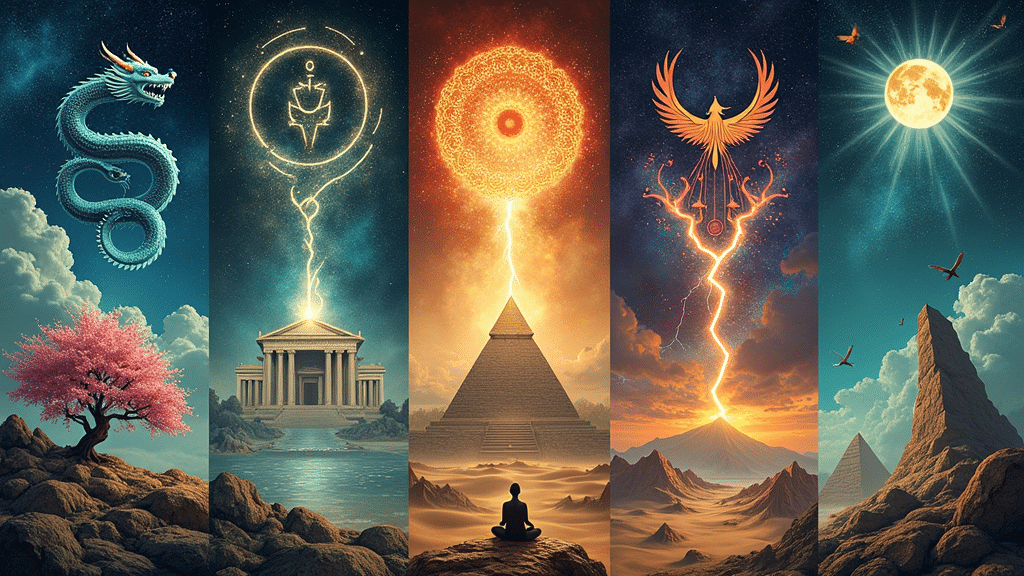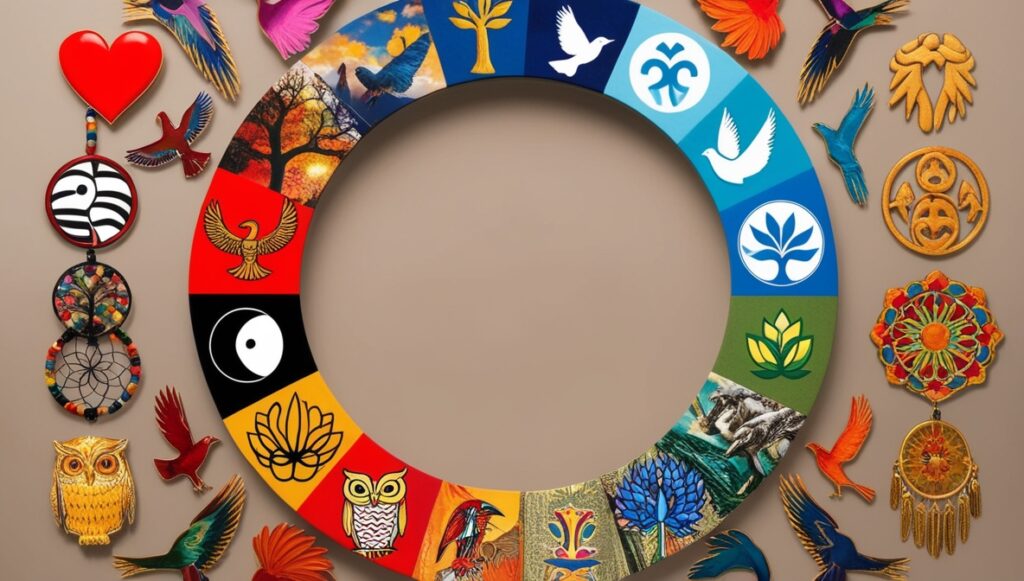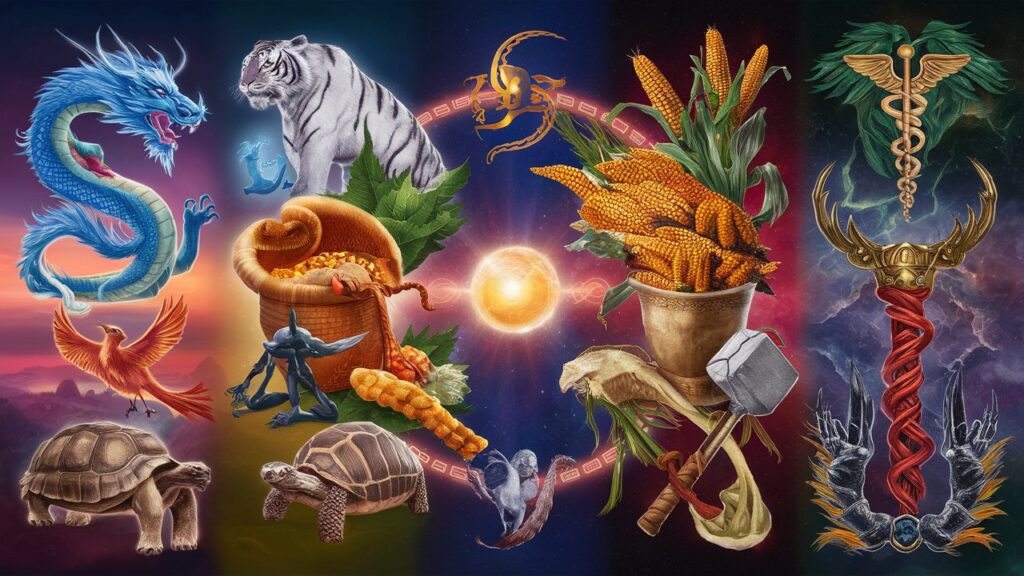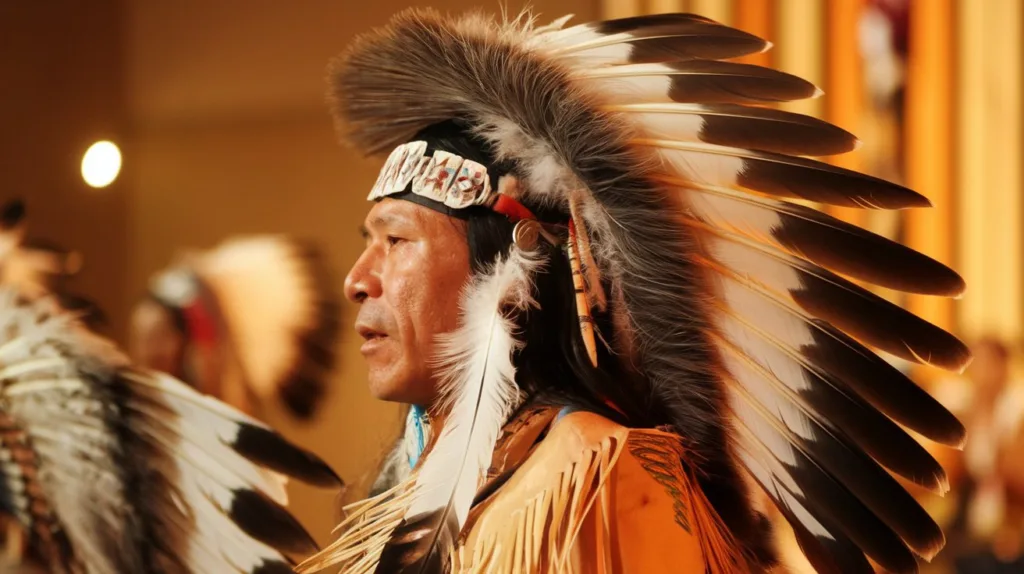Symbols have always played a significant role in the realm of myth and legend, serving as powerful tools to convey complex meanings and universal truths. Symbols in ancient myths and civilizations to modern societies, have been used to represent and communicate key concepts that shape our understanding of the world.
Ancient symbols, with their mythical and mythological origins, hold a deep and profound significance. They are not mere decorations or random shapes; they carry the weight of centuries of cultural and spiritual wisdom. These symbols can be found in the stories of gods and goddesses, heroes and heroines, and the magical creatures that populate ancient myths.
Myths are rich with symbolic forms, actions, expressions, and objects that embody deeper truths. They provide a window into the human psyche and offer insights into our collective consciousness. Symbols in myths are intertwined with religious teachings and societal values, giving them a sacred and profound meaning.
Key Takeaways:
- Ancient symbols in myths and legends hold deep cultural and spiritual significance.
- Symbols in myths convey complex meanings and universal truths.
- Myths provide insights into the human psyche and collective consciousness.
- Symbols in myths are intertwined with religious teachings and societal values.
- Ancient symbols in myths have shaped our understanding of the world.
The Symbolic Power of Ancient Mythology Symbols
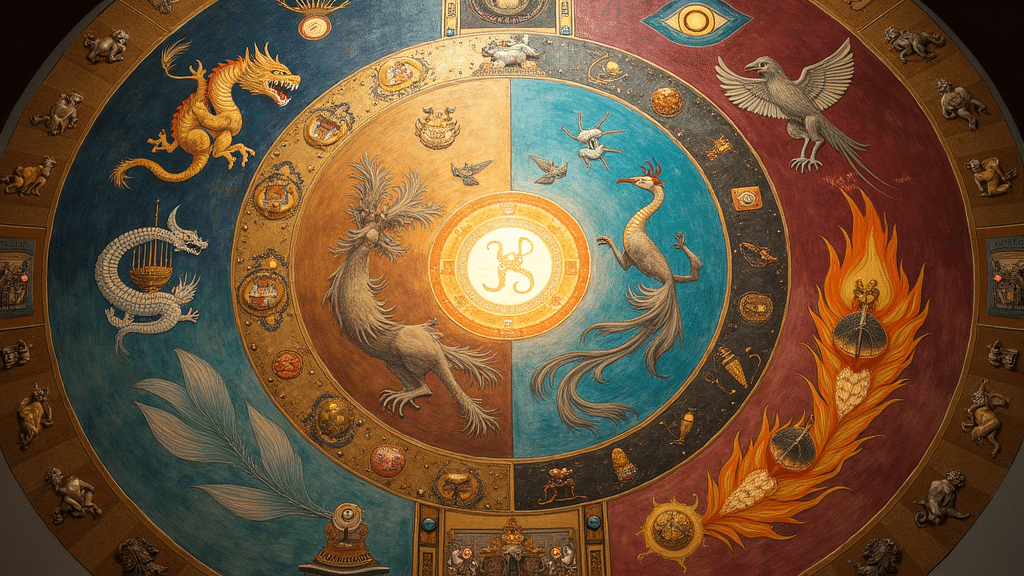

In the rich tapestry of ancient myths and legends, symbols serve as powerful conduits of meaning, conveying complex ideas and universal truths. These ancient symbols, deeply intertwined with the fabric of folklore and mythic storytelling, continue to captivate and inspire us today. From the legendary symbols of Chinese mythology to the iconic representations of Greek and Roman gods, each culture has its own unique symbolic vocabulary that offers profound insights into the human experience.
Symbols in Ancient Chinese Mythology
In Chinese mythology, symbols such as the Four Symbols—Azure Dragon, White Tiger, Black Tortoise, and Vermillion Bird—hold great significance. These celestial creatures represent various astronomical and seasonal aspects, embodying values like good fortune, protection, longevity, wisdom, and luck. Their depictions in art and literature provide a window into the ancient Chinese worldview, offering us a glimpse of their beliefs and cultural practices.
The Mythic Symbols of Greek and Roman Legends
The mythological symbols found in Greek and Roman myths are equally captivating. The Cornucopia, also known as the Horn of Plenty, symbolizes abundance and prosperity. The Caduceus, a staff entwined by serpents, represents commerce, negotiation, and the healing arts. Ears of Corn, a fertility symbol, signifies the bountiful harvest. These symbols reveal the values held dear by these ancient civilizations and shed light on their understanding of the world.
Exploring the Symbolic Depth in Egyptian and Norse Mythology
The symbolism in Egyptian mythology is rich and diverse, with icons like the Phoenix, Wedjat Eye, and Scarab holding deep meanings. The Phoenix, a mythical bird, represents rebirth and immortality. The Wedjat Eye, a symbol of protection and healing, reflects the ever-watchful presence of the gods. The Scarab, associated with the sun god Ra, symbolizes renewal and transformation. Norse mythology, on the other hand, features symbols like Thor’s Hammer, Yggdrasil (the World Tree), and Sleipnir (Odin’s eight-legged horse). These symbols embody strength, interconnectedness, and spiritual journeys, offering profound insights into the Viking worldview.
| Ancient Mythology | Symbol | Meaning |
|---|---|---|
| Chinese | Azure Dragon | Good fortune |
| Chinese | White Tiger | Protection |
| Chinese | Black Tortoise | Longevity, wisdom |
| Chinese | Vermillion Bird | Good luck |
| Greek/Roman | Cornucopia | Abundance |
| Greek/Roman | Caduceus | Commerce, healing |
| Greek/Roman | Ears of Corn | Fertility |
| Egyptian | Phoenix | Rebirth, immortality |
| Egyptian | Wedjat Eye | Protection, healing |
| Egyptian | Scarab | Renewal, transformation |
| Norse | Thor’s Hammer | Strength |
| Norse | Yggdrasil | Interconnectedness |
| Norse | Sleipnir | Spiritual journeys |
These mythical symbols allow us to delve into the collective consciousness of humanity and explore the profound wisdom embedded within our cultural heritage. As we unravel their meanings, we gain a deeper understanding of ourselves and the world around us.
The Symbolism of Myths


Symbols hold a significant role in unraveling the depths of myths and legends, rooted in ancient cultures around the world. These timeless tales are not mere stories but repositories of symbolic meanings that offer insights into universal truths and human reasoning. Symbolism in myths serves as a powerful tool for conveying complex concepts and bridging the gap between the tangible and the intangible, the known and the unknown.
Legends and mythologies from various civilizations abound with symbolic representations, giving form to abstract ideas and philosophical concepts. From legendary creatures like the phoenix, embodying the eternal cycle of rebirth, to the powerful Thor’s Hammer in Norse mythology, symbolizing strength and protection, these symbols enrich the narratives and provide a deeper understanding of their underlying meanings.
Symbolism in myths extends beyond cultural narratives and finds resonance in mystical traditions like Sufism. Sufis employ symbols as a means to transcend the limitations of language and immerse themselves in the realm of spiritual experiences. These symbols, rooted in ancient wisdom and metaphysical insight, guide seekers on their journey towards enlightenment and self-realization.
It is within the symbolism of myths that we find a language that transcends time and cultural boundaries. Through the study and interpretation of these symbols, we gain insights into the collective consciousness of humanity and a greater appreciation for the richness of our cultural heritage.
The Symbolism of Myths: A Journey into the Universal Language
“Symbols are the language of the soul, speaking to us in ways that words alone cannot express.”
Symbolism in Legends: Unveiling Hidden Meanings
| Mythology | Symbol | Meaning |
|---|---|---|
| Chinese Mythology | The Four Symbols: Azure Dragon, White Tiger, Black Tortoise, Vermillion Bird | Represent aspects of nature and fortune |
| Greek and Roman Mythology | Cornucopia, Caduceus, Ears of Corn | Symbolize abundance, good conduct, and fertility |
| Egyptian Mythology | Phoenix, Wedjat Eye, Scarab | Signify rebirth, healing, and power |
| Norse Mythology | Thor’s Hammer, Yggdrasil, Sleipnir | Epitomize strength, interconnectedness, and spiritual journeys |
Symbolism in myths not only offers us a window into the ancient world but also serves as a testament to the enduring power of symbols in shaping our understanding of reality. By delving into the intricate tapestry of symbols woven within myths and legends, we embark on a profound journey of discovery, connecting with the universal language that speaks to the very essence of our existence.
Read More About Mythological Symbols and Their Meanings
Conclusion
Symbols have a profound impact on ancient myths and legends, serving as a means of conveying complex meanings and universal truths. They are not mere representations, but rather recognition and expressions of homogenous relations between signifiers and significance. Symbols are intertwined with myth, ritual, meditation, mysticism, literature, and the visual arts, playing a role in religion and social structures. Drawing from various areas of human culture, they hold significant value in shaping and influencing our perception of the world.
In myths from different cultures, unique symbols convey specific concepts and beliefs. These symbols allow for a deeper understanding of human reasoning and the ways in which symbols shape our collective consciousness. As we study the symbolism in ancient myths and legends, we unravel the profound meaning behind our cultural heritage, gaining insights into the fabric of humanity itself.
By recognizing the role of symbols and their symbolic representations in ancient myths, we can tap into the wisdom of the past and embrace the power of these ancient symbols in our modern lives. They provide us with a connection to our ancestors and offer guidance in navigating the complexities of the human experience. Let us cherish and honor these ancient symbols, for they carry the wisdom of generations and hold the keys to unlocking profound truths.
FAQ
What is the role of symbols in ancient myths and legends?
Symbols in ancient myths and legends serve as a means of conveying complex meanings and universal truths. They help explain universal global realities and shape our perception of the world.
How are symbols intertwined with myth, ritual, meditation, mysticism, literature, and visual arts?
Symbols are present in various aspects of human culture, including myth, ritual, meditation, mysticism, literature, and visual arts. They play a central role in conveying meaning and creating connections between religious and cultural concepts.
Do different cultures have their own unique mythological symbols?
Yes, different cultures have their own mythological symbols that convey specific concepts and beliefs. These symbols help people understand the mysteries of nature, creation, and moral conduct.
What is the symbolism of myths?
The symbolism in myths allows for a deeper understanding of human reasoning and the ways in which symbols shape and influence our perception of the world. Symbols in myths convey meanings and represent concepts, helping to explain universal global realities.


